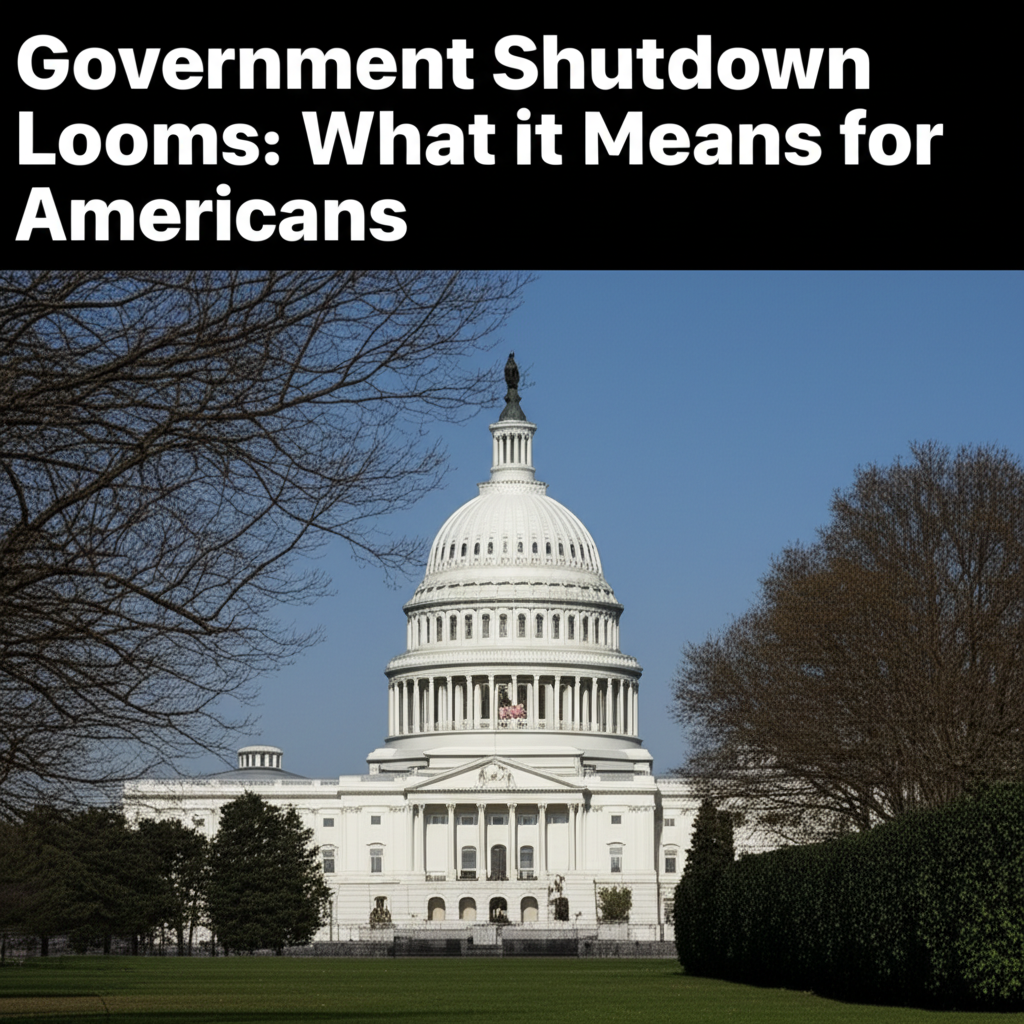Government Shutdown Looms: What it Means for Americans

Government Shutdown Looms: What it Means for AmericansA potential government shutdown is looming as Congress struggles to pass critical appropriations bills
Background
Millions of federal employees could face furloughs, national parks might close, and the broader economy could suffer significant disruption
The deadline is fast approaching, raising concerns about the stability of government operations. This shutdown threatens essential services and impacts the daily lives of ordinary Americans.
It's crucial to understand the far-reaching consequences of this political impasse.
A government shutdown occurs when Congress fails to pass appropriations bills funding federal agencies and programs
Without approved funding, many government operations are forced to temporarily cease.
Historically, shutdowns have stemmed from disagreements over spending levels and policy riders attached to appropriations bills
The impact varies depending on the duration and scope of the shutdown.
Past shutdowns have led to:Furloughs of non-essential federal employeesClosure of national parks and museumsDelays in government services such as passport processingDisruptions to scientific research and data collectionThe most recent significant shutdown occurred in late 2018 and early 2019, lasting for 35 days and becoming the longest in U
It caused widespread disruption and cost the economy billions of dollars.
Current SituationCurrently, Congress is divided over several appropriations bills, with disagreements centering on overall spending levels and specific policy priorities
Negotiations are ongoing, but significant differences remain. If no agreement is reached by the deadline, a partial or full government shutdown will ensue.
The White House has warned of potential vetoes if spending levels are deemed unacceptable.
Key areas of contention include:Defense spendingFunding for border securityDomestic programs"A government shutdown is never a good thing
It disrupts services, harms the economy, and undermines public trust," says Maya MacGuineas, president of the Committee for a Responsible Federal Budget
ImplicationsThe implications of a government shutdown are far-reaching
Federal employees face uncertainty and financial hardship due to furloughs. National parks and museums close, impacting tourism and recreation.
Government services are delayed, affecting citizens who rely on them. The economy can suffer as a result of reduced government spending and decreased consumer confidence.
Specific potential impacts include:Economic impact: Reduced economic growth, decreased consumer spending. Federal employees: Furloughs, delayed paychecks, job insecurity.
National parks: Closure, loss of revenue, damage to natural resources. Government services: Delays in passport processing, social security payments, and other essential services.
Essential services, such as air traffic control and law enforcement, will likely continue to operate, but with potentially reduced staffing levels.
Future OutlookThe future outlook depends on the outcome of ongoing negotiations in Congress
If an agreement is reached, a shutdown can be averted. However, if disagreements persist, a shutdown is inevitable.
The duration and scope of the shutdown will determine the extent of the impact.
Several scenarios are possible:A short-term continuing resolution could be passed to temporarily fund the government while negotiations continue
A partial shutdown could occur, affecting only certain agencies and programs. A full shutdown could occur, impacting all non-essential government operations.
It is crucial for Congress to find a compromise that addresses the needs of the country while avoiding the harmful consequences of a government shutdown
ConclusionA potential government shutdown looms, threatening essential services and the economy
The outcome depends on ongoing negotiations in Congress. It's critical to stay informed about the developments and understand the potential impact on your life.
